Asian Art sale at Christie's Paris achieves €7.8 million
Lot 208. Rare statue de Guhyasadhana Lokeshvara en bronze doré, Chine, dynastie Ming, marque incisée à six caractères et époque Yongle (1403-1424). Hauteur totale : 10 cm. (4 in.). Estimate EUR 50,000 - EUR 80,000. Price realised EUR 910,000. © Christie's Images Ltd 2019.
PARIS.- The top lot of the sale was a gilt-bronze figure of Guhyasadhana Lokeshvara, coming from a Dutch collection, which sold for €910,000 against a presale estimate of €50,000-80,000 (lot 208).
Lot 208. Rare statue de Guhyasadhana Lokeshvara en bronze doré, Chine, dynastie Ming, marque incisée à six caractères et époque Yongle (1403-1424). Hauteur totale : 10 cm. (4 in.). Estimate EUR 50,000 - EUR 80,000. Price realised EUR 910,000. © Christie's Images Ltd 2019.
Il est représenté assis en vajrasana sur un socle lotiforme placé sur un padma lotus. Ses bras principaux enlacent sa parèdre dont les mains sont en anjalimudra. Ses deux autres mains tiennent le rosaire et le lotus. Sa parèdre porte le karttrika et le kapala. Il est vêtu d'un dhoti. Les divinités sont parées de bijoux. Son visage est empreint de sérénité. Ses cheveux sont coiffés en chignon et rehaussés d'une tiare. La base porte la marque incisée à six caractères de l'empereur Yongle ; scellée.
Provenance: Dutch private collection, within the family since 1946.
Exhibited: On loan to the Royal Tropical Institute, Amsterdam, 1993-2018.
Note: This superbly cast gilt-bronze figure of Guhyasadhana Lokeshvara is characterized by the indisputable quality of the gilding and its sculpture despite its small size. The presence of the second circular lotus stand under the sealed padma lotus stand could suggest that it was part of a larger sculpture, possibly one of the very elaborate Yongle-period gilt-bronze mandalas with articulated petals which could be closed to form a lotus bud. See the magnificent and iconic gilt-bronze Vajrabhairava eight-petaled lotus mandala, also bearing an incised Yongle reign mark, in the collection of the Tibet Museum, Lhasa.
Bronzes in the Tibeto-Chinese style produced during the reign of Emperor Yongle in the first quarter of the 15th century and bearing his reign mark, are highly distinguished for their unsurpassed craftsmanship, overall refinement and gracefulness. Executed by the Imperial ateliers, they display a highly consistent and uniform style, which evolved out of the influence of the Nepalese artist Anige (1244-1306) at the Yuan court and the close links with Tibet established by the Yongle Emperor. The distinct Imperial style includes double-lotus bases with beaded rims and characteristic facial features with broadened outline, gently arched brows above the lidded eyes and subtle smile, all finished with great attention to detail.
Tiphaine Nicoul, Director of the Asian Art department, and Camille de Foresta, specialist and auctioneer of the sale: “We are delighted with these remarkable results which are far beyond our expectations. Strong interest was seen for lots coming from private French and European collections. The packed room demonstrated that international buyers, coming from 18 different countries, have a continuing strong appetite for rarity, quality and fresh to the market Asian works of art such as the magnificent gilt-bronze figure of Guhyasadhana Lokeshvara, which sold for an impressive €910,000, a beautiful imperial yellow embroidered satin dress, coming from a private French collection, which realised €586,000, more than 7 times its presale estimate, a white and russet jade DA JI double-gourd vase and cover which sold for €538,000 and the exceptional ZITAN dragon cabinet from the Qing dynasty sold for €406,000 against a presale estimate of €120,000-150,000”.
Lot 100. Exceptionnelle robe impériale en soie brodée des douze symboles à fond jaune, longpao, Chine, dynastie Qing, fin de l'époque Qianlong (1736-1795) - début de l'époque Jiaqing (1796-1820). Hauteur: 137 cm. (53 7/8 in.), Largeur: 210 cm. (82 5/8 in.). Estimate EUR 80,000 - EUR 120,000. Price realised EUR 586,000. © Christie's Image Ltd 2019
Cf. my post: PRINTEMPS ASIATIQUE du 6 au 17 juin 2019 à Paris
Lot 45. Important vase couvert 'double-gourde' en jade blanc et rouille, Chine, dynastie Qing, époque Qianlong (1736-1795). Hauteur: 20 cm. (7⅞ in.). Estimate EUR 150,000 - EUR 200,000. Price realised EUR 538,000. © Christie's Images Ltd 2019.
Reposant sur un petit pied, il est méticuleusement sculpté imitant la forme d'une calebasse, la double panse délicatement ornée sur chaque face de quatre chauves-souris volant parmi des nuages, du caractère 'da' sur la partie supérieure et 'ji' sur la section inférieure, formant le terme 'da ji' ('grande chance'). Le col est flanqué de deux anses tenant un anneau mobile surmontées par une chauve-souris sculptée en relief aux ailes déployées tenant un lingzhi. Le couvercle, à décor de lingzhi, est surmonté d'une petite tige et de deux demi-anneaux formant la prise. .
Provenance: French private collection, in the family since late 19th century.
Note: The decoration on this vase encompasses numerous auspicious symbols. The double-gourd is associated with Daoism, as it is the attribute of the immortal Li Tieguai; it is also symbolic of prosperity and abundance, and in particular, an abundance of children. This theme of abundance is reinforced by the characters, da ji, 'good fortune', inscribed on both sides of the gourd.
This double-gourd form with the da ji inscription is, thus, very popular and may be found in a variety of materials, including porcelain. In jade, a very similarly decorated white jade double-gourd-shaped vase, also inscribed da ji, is illustrated in A Romance with Jade from the De An Tang Collection, Hong Kong, 2004, pl. 44; and another, lacking its cover, is illustrated by Yang Boda (ed.), Essence of Qing Jades, Hong Kong, 1995, p. 78-79. Compare also a double-gourd-shaped ewer carved with low-relief gourd vines and with a similar cover suspending a loose ring, illustrated in Zhongguo Yuqi Quanji, vol. 6, Hebei, 1991, no. 3.
Lot 76. Important cabinet en zitan, Chine, dynastie Qing, époque Qianlong (1736-1795). Hauteur: 102 cm. (40 1/8 in.) Largeur: 104 cm. (40 7/8 in.) Profondeur: 55 cm (21 5/8 in. Estimate EUR 120,000 - EUR 150,000. Price realised EUR 406,000. © Christie's Images Ltd 2019.
Il est de forme rectangulaire et ouvre à deux vantaux. Chacun est très finement et profondément sculpté de deux dragons à cinq griffes à la poursuite de la perle enflammée, leur corps sinueux aux écailles délicatement rendues, volant sur fond de nuages mouvementés stylisés évoquant des têtes de ruyi, les charnières en bronze doré finement incisées de dragons sur fond de nuages, la ferrure centrale rectangulaire à décor de caractères shou stylisés et deux petites plaques mobiles agrémentées de chauves-souris. La patine du bois est d'une tonalité chaude et brillante.
Note: The present cabinet is exceptional, not only because of its size requiring a substantial amount of the precious zitan wood to be used in its construction, but also because of its superb carved decoration of dragons. This large cabinet, originally the upper part of a compound cabinet, has two front doors, each installed on either side with gilt-bronze plates which are decorated with dragons amongst clouds and waves. The doorpulls, on the other hand, are decorated in low relief with bats and chimes.
This cabinet is notable for its richly carved zitan panels of dragons rising from tumultuous waves against a dense cloud ground. Such imagery was historically popular among, and exclusive to, members of the imperial family, thus placing the present cabinet in the highest class of Chinese furniture. The exceptional high relief and complex composition of the panels are comparable with a large zitan cabinet, similarly decorated with dragon and cloud designs, pictured in situ in the bedroom behind the Yangxin dian (Hall of Mental Cultivation), illustrated in The Complete Collection of Treasures of the Palace Museum. Furniture of the Ming and Qing Dynasties (II), Hong Kong, 2002, pl. 249. See a large cabinet with four zitan panels decorated with similar dragons sold in Sotheby's Paris, 15 December 2011, lot 35 and another zitan top chest, possibly a match pair to our present cabinet, of exactly the same size and decoration, dated to the Qianlong reign, sold in Sotheby's Paris, 12 June 2018, lot 144.
Further highlights included the highly-anticipated crystal rock deer coming from the former collection of Coco Chanel which price flew up to €162,500 against a presale estimate of €2,000-3,000.
Zheng Ma, Asian art specialist: “A year after the sale of the biscuit monkey, coming from the same prestigious provenance and which realised €112,500, we are delighted to have witnessed another huge success with this poetic rock crystal deer which moved international collectors and admirers of notable collector: Coco Chanel. This amazing result demonstrates that fresh to the market works combined with an important provenance is a continuing key element for collectors.”
Lot 78. Cerf en cristal de roche, dynastie Qing (1644-1911). Hauteur: 18,5 cm. (7 ¼ in.), socle et cloche en verre. Estimate: €2,000-3,000. Price realised EUR 162,500. © Christie's Images Ltd 2019.
Représentant un cerf assis, la tête tournée vers le côté, tenant un branchage de lingzhidans la gueule ; petites restaurations.
OTHER HIGHLIGHTS OF THE SALE
Lot 189. Statues de Guandi et de deux assistants en bronze doré, Chine, dynastie Qing, XVIIIème siècle. Hauteurs: 32 cm. (12 ½ in.) et circa 23 cm. (9 in.). Estimate: €30,000 - EUR 40,000. Price realised EUR 382,000. © Christie's Images Ltd 2019.
Guandi est représenté assis sur un trône incisé des Emblèmes de triratna, de lions et rehaussé d'incrustations. Sa main droite lisse une mèche de sa barbe, sa main gauche repose sur sa jambe. Il est vêtu d'une armure élaborée et d'une tunique à décor de dragons. Son visage est empreint de sévérité. Ses assistants sont représentés debout sur un socle. Ils sont vêtus d'armures et portent des bottes ; re-scellées.
Provenance: Belgian private collection.
Lot 152. Verseuse rituelle couverte en émaux cloisonnés, Chine. Hauteur: 22,5 cm. (8 7/8 in.). Estimate: €8,000 - EUR 12,000. Price realised EUR 322,000. © Christie's Images Ltd 2019
La panse bombée et le col évasé sont à décor de lotus à l'intérieur des cartouches, l'anse courbée d'une arête médiane se termine par une tête de ruyi. La base en bronze doré est incisée d'un double vajra.
Lot 134. Statue de Bouddha en jade céladon pâle, Chine, dynastie Qing, XVIIIème siècle. Hauteur: 28,5 cm. (11 ¼ in.). Estimate: €1,500 - EUR 2,000. Price realised EUR 150,000. © Christie's Images Ltd 2019
Il est représenté assis en vajrasana sur un socle lotiforme sous une canopée richement décorée. Vêtu d'une robe monastique souple, ses deux mains tiennent une pagode. Les yeux mi-clos, il est empreint d'une expression méditative.
Provenance: Property from a European private collection, acquired by the grandfather of the current owner in the 1930-1940s in China.

/https%3A%2F%2Fprofilepics.canalblog.com%2Fprofilepics%2F1%2F0%2F100183.jpg)
/https%3A%2F%2Fstorage.canalblog.com%2F03%2F02%2F119589%2F96711876_o.jpg)
/https%3A%2F%2Fstorage.canalblog.com%2F11%2F31%2F119589%2F94773502_o.jpg)
/https%3A%2F%2Fstorage.canalblog.com%2F20%2F83%2F119589%2F94772815_o.jpg)
/https%3A%2F%2Fstorage.canalblog.com%2F26%2F72%2F119589%2F75604929_o.jpg)
/https%3A%2F%2Fstorage.canalblog.com%2F59%2F60%2F119589%2F26458628_o.jpg)

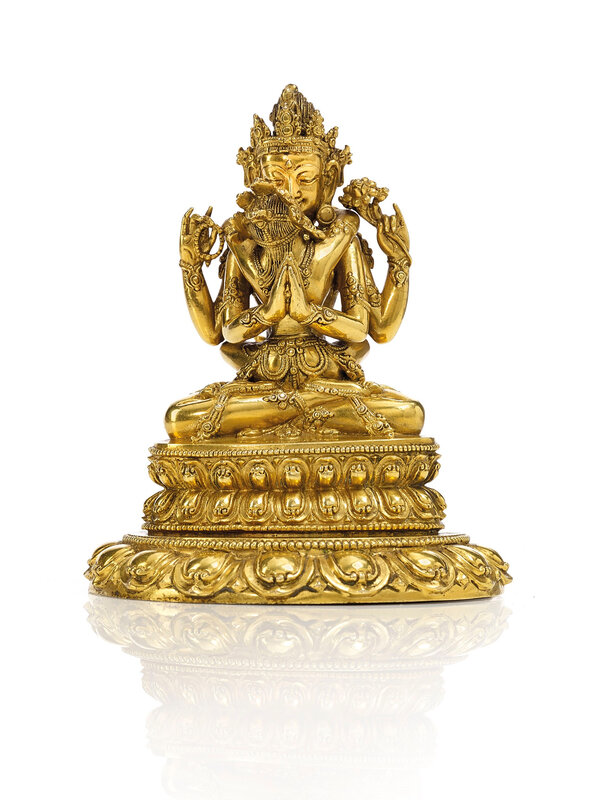
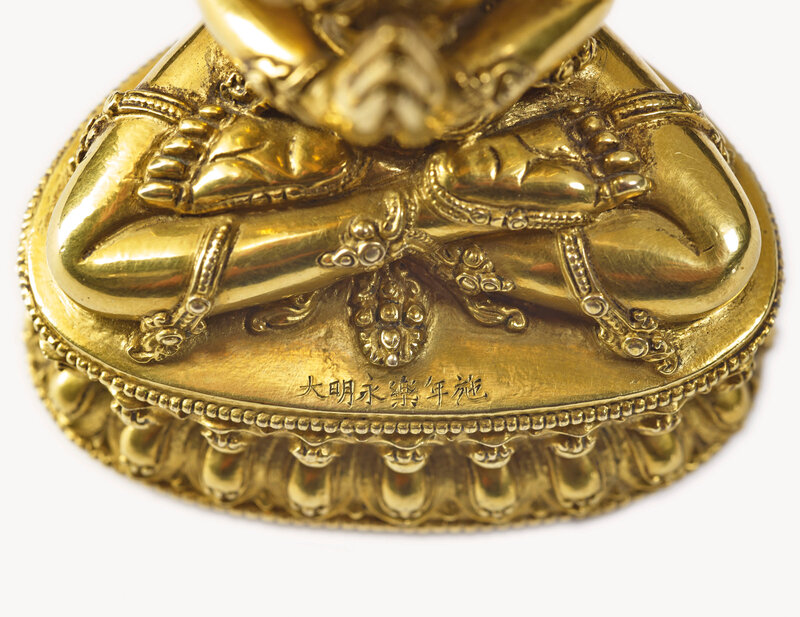




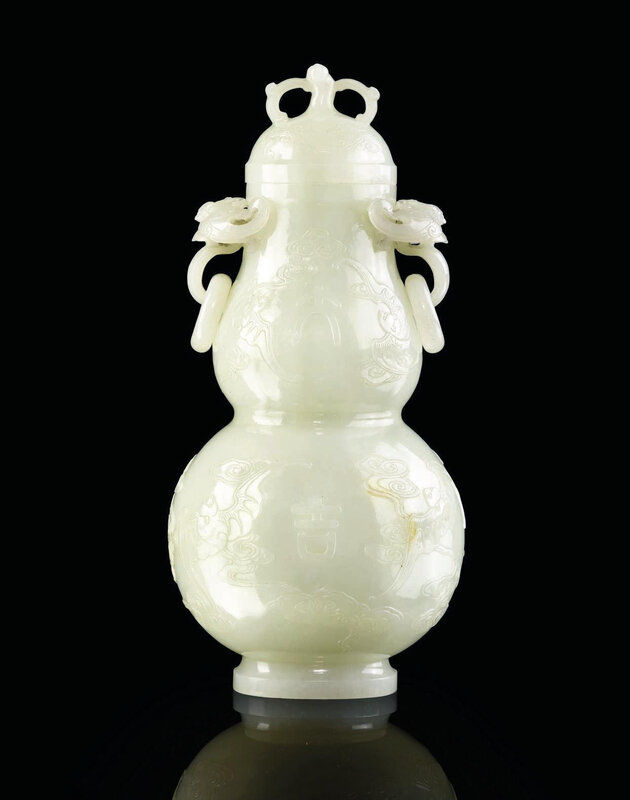
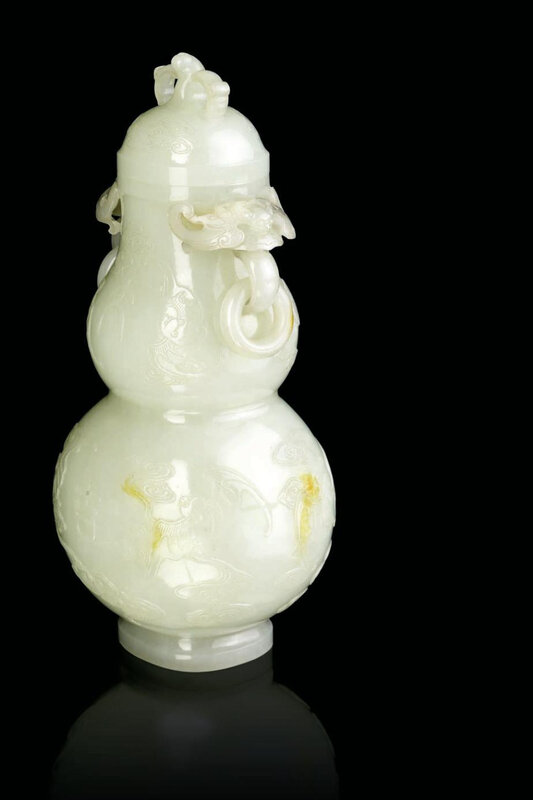



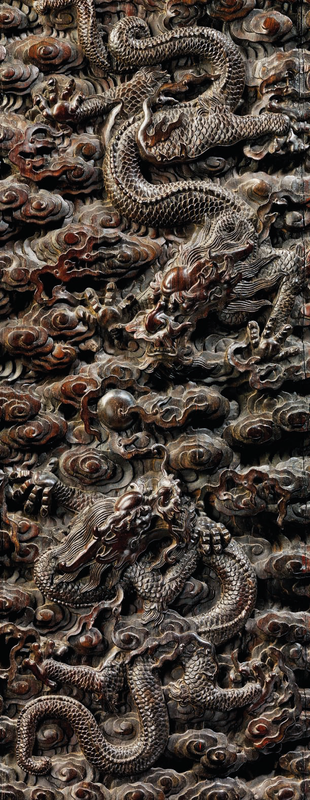

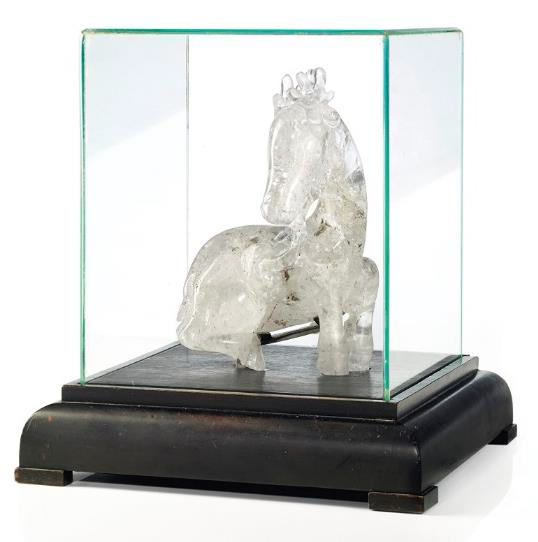

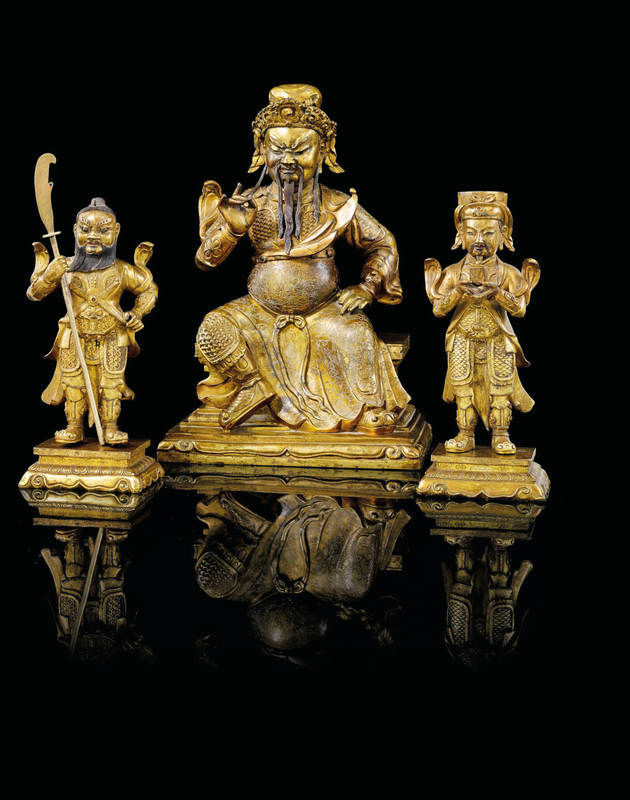
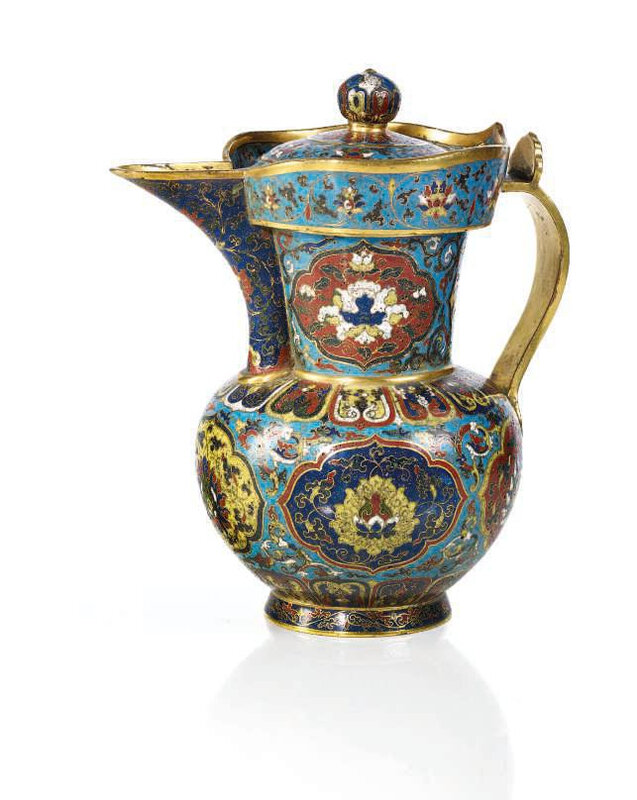



/image%2F1371349%2F20240418%2Fob_ac5c4c_telechargement.jpg)
/image%2F1371349%2F20240418%2Fob_709b64_304-1.jpg)
/image%2F1371349%2F20240418%2Fob_22f67e_303-1.jpg)
/image%2F1371349%2F20240417%2Fob_9708e8_telechargement.jpg)